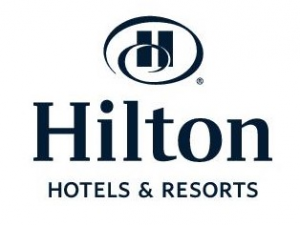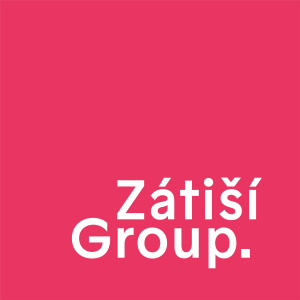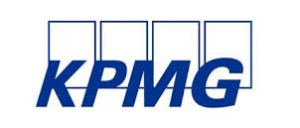
AmCham CZ: Return to Bohemia and Moravia
Covid has had and likely will have a devastating short-term impact on the Czech tourism industry. The tourist sector depends on foreign guests for a large share of its income. This is particularly true of Prague. The domestic tourism market should revive this summer, although decreased family incomes– or fears of decreased incomes– may result in less spending and shorter stays through the winter ski season.
Foreign tourism will be concentrated on automotive tourism until movement restrictions are fully lifted, and fears of the virus are reduced or mitigated by a vaccine. Economic difficulties for families may mean substantially less travel for a two to three year period for incomes in the 75 percentile and lower.
All major destinations face the same situation. Each will likely offer lower prices as a way to bring customers into the market.
Target.
The strategy for attracting foreign tourist should be to create unique events based on the country’s history and culture that will increase not only the daily spending but the number of days spent in the country. In our response to the impact of the virus, we should be trying to shift our niche in the global tourist market into the premium part of the spectrum. This means less dependence on promoting discounts and lower prices.
Since Prague has a greater reputation in the tourist industry and is the central entry point for flyers (flying is the primary transport in premium markets), the city should be the fulcrum of the strategy.
The city had 16 million foreign tourist nights in 2019. We should aim for same amount of nights while reducing the number of actual tourists by increasing the average length of stay from 2.4 nights to 3 nights. As a proxy for overall guess spending, the city’s revenue per available room night should reach the 2019 average in 2022 and increase by 10% annually over the 2022-2027 period.
Pool Resources with other Central European countries.
Almost every major tourist market will be trying to regain market share as quickly as possible. Many have larger financial resources available than the Czech Republic. In order to even the playing field with countries such as Italy and France, we suggest co-operating with other Central European countries such as Croatia, Hungary, Slovenia and Austria on a “soul” of Europe campaign distributed through major media platforms.
The campaign would emphasize the rich historical significance, cultural importance, and, of course, natural and architectural beauty of the region, along with its diversity (from the coastlines of Croatia to the rolling hills of the Czech Republic). The campaign could feature one spot on the historical significance, one on the natural beauty of the region, and one on the cultural importance of the region’s cities (Prague, for instance, as the home of both the robot and the golem).
The goal would be to increase trips to multiple destinations in the region (and to increase Prague’s share of revenue generated in such trips), and to increase cultural and historical tourism.
The Paths of Europe.
High income individuals want to combine sport with culture. The countries of Central Europe could meet this demand by creating special historical walking and biking paths between the major towns and cities or connecting the wine regions of Tokaj, Nitra and Moravia. These paths should be dedicated to hikers and cyclists, and removed by some distance to roads used by vehicles. EU money could be used to construct the paths and rest stations.
Some other possibilities include 1) a Composers Path that would take tourists from concert halls in major towns and cities to the birthplaces or adopted home towns of major Central European composers, complete with musical performances and lectures during the high season, or 2) Napoleon’s Rise and Fall Path that followed the route of his army as it advanced and then fell back from Russia.
The Czech Camino– the Czesta.
To take advantage of the fame of Czech beer and the growing cycling and running communities, the country could organize a cycling and running tour of the country that would start in Prague (at Staropramen) travel to the Šumava (Budvar), Brno (Starobrno), Hradec Králové and end at the Plzeňský Prazdroj breweries. Although the major breweries would be the pivot points, the tour would also promote smaller and microbreweries located along the path. The tour would take place over at least a twoweek period preferably before or after the regular Czech summer vacation season when school lets out for the summer. At each stop, participants would be treated with a different brand of Czech beer, and local cuisine. At the end, participants would receive a ceramic tile depicting Czech hops– similar to the seashell motif presented to those who complete the Camino. Participation would be limited, and paid.
Over time a dedicated path could built on the route to avoid traffic. Consumption of beer would be limited to evenings.
The Spa Circuit.
A wellness cycling and walking circuit could be developed between Czech spa towns (and possibly with other wellness sites in neighboring countries. As with the beer tour, the spa circuit would allow the development of wellness stops placed between the spa towns, and generate more income for that local economy. Unlike the spa circuit, there would not be an official period for the course; individuals could use it year round. When someone had visited all the spa towns, that person would be awarded a ceramic plaque with “the waters” symbolized on it.
Change the way the premiere tourist attractions of Prague are utilized.
Before Covid19, Prague’s main attractions were overwhelmed by tourists, and free. They could be monetized and used to promote the country’s culture. The sites would be closed for 4-6 evenings a month for paid performances.
For instance, the Prague Castle Courtyard could be used to stage special productions of plays and adaptations of novels by Václav Havel, Karel Čapek, Franz Kafka; the performances could alternate languages (Czech, English, German). This could raise the profile of the country as a democratic standardbearer, and build on the respect of such human rights advocates as T.G. Masaryk and Václav Havel.
The Charles Bridge could be setting for two annual performances of Smetana’s Má vlast. Digital projections on buildings on both sides of the bridge would accompany the music. Sections of the bridge and the accompanying river bank would be given to restaurants to serve food to paying customers. Video screens would be made available to city districts so that viewings could be organized on local squares.
Old Town Square could be used for regular jazz and modern music performances focused on individual performers who innovate with their instrument: the human voice. Buildings on the square would be decorated by digital projections which accompany the music.
Václavské náměstí could be the site of an annual Golem steeplechase. Universities from across Europe would be invited to compete in constructing a robot that can complete a series of tasks in a course that begins at the National Museum and runs down to Můstek and then back to the National Museum. This event would raise the profile of the countries technological prowess, and give the country’s tech companies an opportunity to identify talents.
We propose doing pilot projects for each site in 2020. The events should be non-profit for the organizers (performers should be paid). Video of each event should be used in country promotional campaigns, live broadcast on socialmedia, and made available to all hotels and other hospitality industry for use in their campaigns.
The Czech Tourism Fund.
In order to develop these plans, we believe a state-owned subsidiary should be established for developing and operating the infrastructure. The State, Regions and municipalities would dedicate initial resources to the projects with a commitment of five years; their level of decisionmaking on the development of the project would depend on the relative size of their continued contribution. Hotels and restaurants operating in the areas in which the projects occur would be charged either a fee per room night or a fee per table.
Log In




